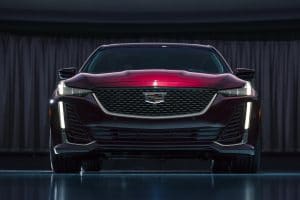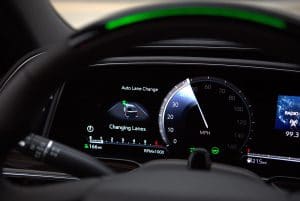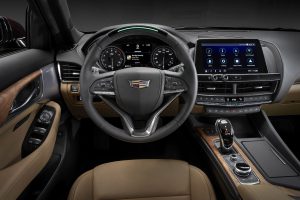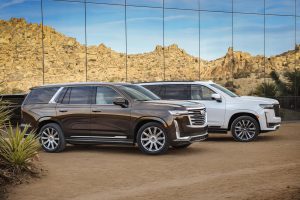General Motors’ semi-autonomous Super Cruise has been on just one vehicle since it made its debut on the big Cadillac CT6 sedan debuted in 2017, but it’s about to start showing up on a lot more products, with a goal of adding it to three more products later this year and offering it on at least 22 new models by the 2023 model year.
At the same time, the Detroit automaker is planning to not only increase the functionality of the system but also make it operate on substantially more U.S. roadways, this year jumping from 130,000 to 200,000 miles of limited access highways and trunk roads. With this year’s update, motorists also can change lanes with just the tap of a turn signal.
“We’ve exceeded the (anticipated) take rate on the CT6 and customers use Super Cruise more than expected,” said Scott Miller, the GM exec overseeing the development and roll-out of the hands-free system, noting that about 30% of Caddy CT6 buyers have shelled out the $2,500 for the option.
(Cadillac updated, expanding use of Super Cruise.)
What may be particularly compelling for GM is the fact that 85% of those who have the system say they would prefer or only buy a vehicle with Super Cruise in the future.

The Enhanced Super Cruise System will debut on the Caddy CT4 and CT5 sedans and then go on the next-gen Escalade.
As is often the case for the latest technologies, GM’s strategy has been to launch Super Cruise on its flagship brand and then migrate it down through the rest of the line-up. It will continue to limit availability to Cadillac models through the end of the 2021 model-year, but add the feature to the CT4 and CT5 sedans, as well as the totally redone Escalade SUV.
In 2022, things will change, with Super Cruise starting to spread out into other brands, Chevrolet adding it to the Bolt EV (including the extended-range version of that battery car, the Bolt EUV coming that year), as well as the Silverado and GMC Sierra.
The pace picks up even more in the 2023 model-year, according to Miller, with another 12 models getting SuperCruise.
The math might not add up. Arguably, that works out to 23 products – even 24, if you count the Chevy Bolt EV and Bolt EUV separately. But it also suggests that, as has long been expected, Cadillac will drop the slow-selling CT6 sedan by 2023.
(New study shows motorists confused by high-tech features like Autopilot and Super Cruise.)
However you count it, by that year, Miller noted, new models with the hands-free capability will be rolling out every three months, on average, And, it appears, we’ll see still more after 2023. That should come as no surprise as GM has an array of all-electric models coming, as it revealed this week, including the Cadillac Lyriq SUV and an all-electric alternative to the Escalade, among others.

Caddy models with Enhanced Super Cruise will automatically change lanes, when the system is active, simply by tapping the turn signal.
Significantly, all the new EVs will feature a completely new electrical architecture making it much simpler to add high-tech features. Among other things, smartphone-style over-the-air updates, or OTA, will become a norm.
Even existing vehicles with Super Cruise have some OTA capabilities, largely to expand their map databases. But that will permit GM to update even current CT6 sedans with the service to add the ability to change lanes with the tap of a button. That said, moving forward, the automaker is adding an additional rear radar sensor to ensure vehicles with Super Cruise don’t cut in front of another car approaching fast from behind.
Getting more miles into the Super Cruise database is another goal for GM. It began with 130,000 miles of limited-access highways in the U.S. and Canada that were pre-mapped using high-definition 3D LIDAR technology. It has now added 70,000 miles of trunk roads that are still divided but which may have occasional grade crossings, rather than just on and off ramps.
GM said it is making other running changes to Super Cruise, including improving the sensor system that ensures drivers keep their eyes on the road and remain at the ready in case of an emergency.
Super Cruise has won widespread kudos and is considered perhaps the closest anyone has come to taking on Tesla’s own Autopilot technology. The California EV maker has added a number of features, such as limited self-parking, however, and promises to take its system to the next level with it going virtually fully autonomous. But that target has been delayed repeatedly. Meanwhile, Autopilot came under fire this month during a hearing by federal regulators looking into its role in several fatal crashes.
(Cadillac expanding coverage of hands-free Super Cruise.)
Where Autopilot, Super Cruise and other technologies will go, and how soon, is one of the big questions as the auto industry pushes closer and closer to truly hands-free and even driverless technologies.


